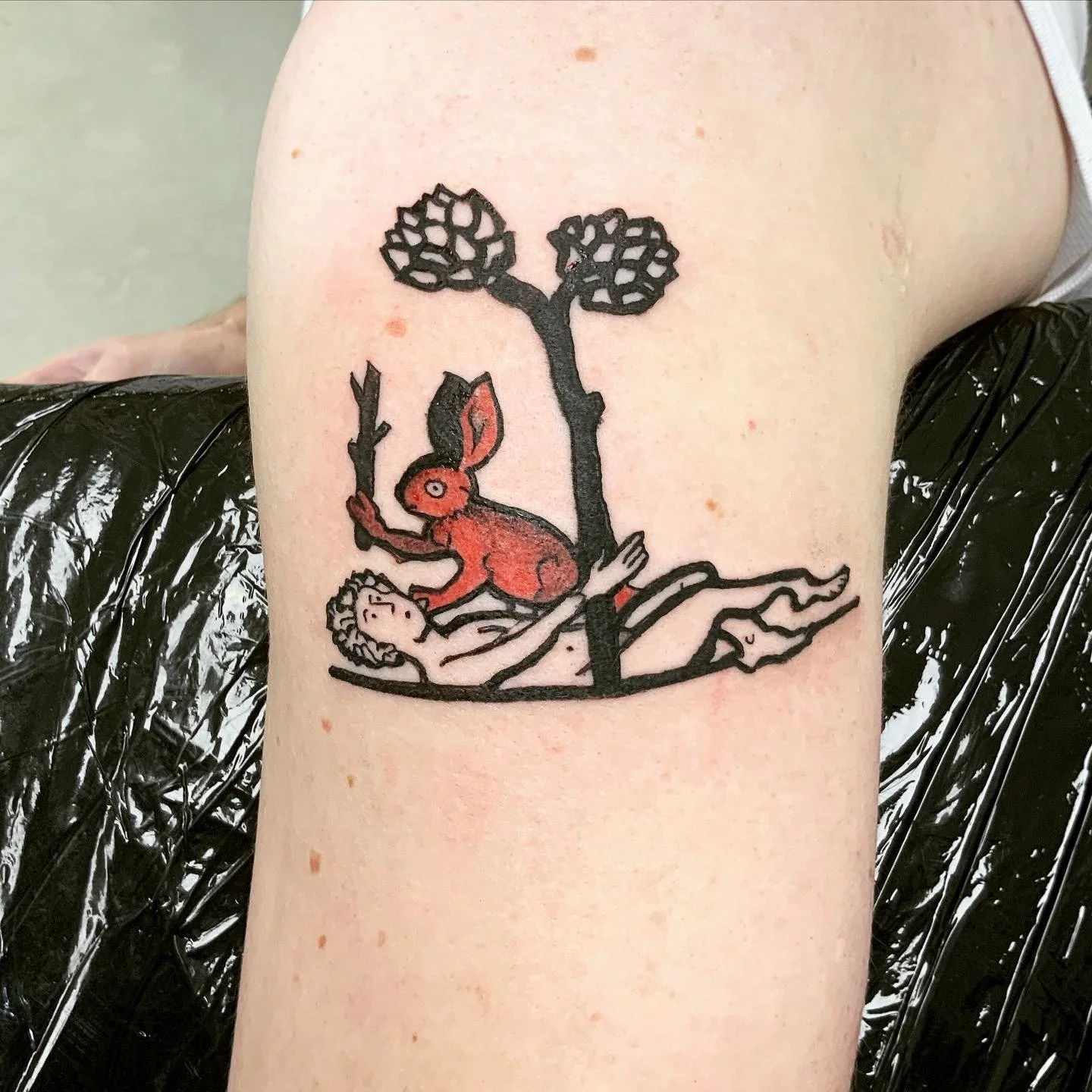The Hunt of the Unicorn.
A tattoo inspired by a quiet moment from a 15th-century tapestry
The Fountain and the Unicorn
I made this tattoo for @_niklahum. He came to me with a clear idea — a small detail from The Hunt of the Unicorn tapestries. He didn’t want the full scene or the unicorn itself, only the fountain — the quiet center.
In the original tapestry, the unicorn kneels by the fountain, purifying the water with its horn. It’s a calm moment in the middle of the hunt — simple, but powerful. That was the feeling we wanted: stillness surrounded by movement.
When you take the fountain out of the full composition, it stops being just a fountain. You can still recognize it if you know the story, but it becomes something else — more abstract, less direct. It loses the clear context and starts to live on its own, almost like a coded shape.
We did that on purpose. In tattooing, not everything needs to be explained. Sometimes an image speaks louder when it holds something back. The fountain, once separated, keeps that quiet energy — symbolic, not literal. It’s not a traditional tattoo element, and that’s what makes it interesting, in my opinion.
The original tapestries were woven in the late 1400s or early 1500s, probably in the Southern Netherlands. No one knows who commissioned them — maybe a noble family, maybe as a wedding gift. Now they’re at The Met Cloisters in New York, and seeing them in person feels like stepping into another time.
They’re made of wool, silk, and silver threads — every inch full of meaning. Plants once believed to heal poison, strange animals, hunters unaware of what they’re chasing. And still, the fountain remains the quiet heart of the story.
Fountains have always been linked to purity and renewal. Across cultures, water represents life, healing, and truth. It’s where the natural meets the spiritual. The unicorn purifying the water makes that even stronger — an image of the raw made pure, of something raw touching the sacred.
noT
Explore the original The Hunt of the Unicorn tapestry series (The Met):
https://www.metmuseum.org/art/collection/search/467075Learn more about The Met Cloisters collection (New York):
https://www.metmuseum.org/visit/met-cloistersFull overview of the seven Unicorn Tapestries, panel by panel:
https://www.metmuseum.org/toah/hd/unto/hd_unto.htmSymbolism of the unicorn in medieval art and lore:
https://www.metmuseum.org/blogs/now-at-the-met/2015/unicorn-in-captivityAcademic article on sacred symbolism in The Unicorn Tapestries:
https://www.jstor.org/stable/776764Plants and animals in the tapestries (interactive botanical guide):
https://www.metmuseum.org/-/media/files/learn/teens/met-teen-unicorn-tapestries.pdfVideo tour of the Unicorn Tapestries at The Met Cloisters:
https://www.youtube.com/watch?v=V1Pl8CzNzNw






